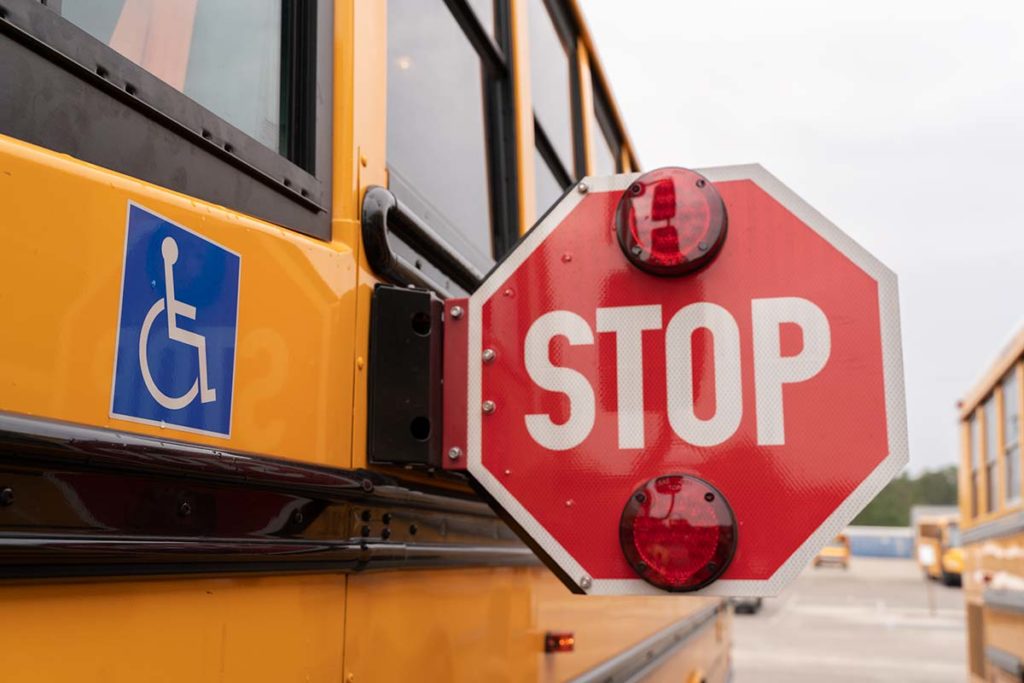
Orangeburg County School District (OCSD) confronted the problem of securing consistent communication between its bus drivers and school administrators, safety officers, and parents.
When the four school districts in Orangeburg County, SC consolidated in 2019, with the district growing to 31 public schools—elementary schools, middle schools, high schools, along with three career academies—serving more than 13,000 students, Orangeburg administrators faced a number of logistical challenges.
Namely, Orangeburg County School District (OCSD) faced a problem coordinating its bus fleet and communicating with administrators, safety personnel, and parents when delays or incidents occurred on its buses. Located to the southeast of Columbia, Orangeburg County spreads across a large geographic expanse: the county and its schools cover 76 miles from east to west. A bond referendum of $4 million dollars in 2020, which enjoyed overwhelming support from voters, enabled OCSD to make much-needed technology upgrades both in the classroom and to its communications infrastructure. In particular, administrators at OCSD knew they needed to outfit their buses with new mobile radios. Prior to their partnership with Mobile Communications America (MCA), bus drivers had been using their cell phones to communicate critical messages to school administrators.
Simply put, OCSD needed a better way to ensure the safety of students on their buses as they traveled across the county.
As Orangeburg County School Superintendent, Dr. Shawn Foster explained,
“Turning around a school academically is something I had familiarity with, and something I felt we could achieve, but students who aren’t safe—whether that be on the playground or on buses—can’t be expected to learn. As educators, we need to take a holistic approach to our students’ learning and safety.”
Challenges
- Bus fleet not well-coordinated
- Bus delays and incidents are difficult to communicate to staff and parents
- Drivers using personal cell phones
Solutions
Motorola’s MOTOTRBO XPR 5550e Digital Mobile Radios
- Wi-Fi and Bluetooth 4.0 allow fast and easy communication
- Outstanding coverage in South Carolina
- CapacityMax™ network connects directly to emergency services
Motorola’s MOTOTRBO XPR 7550Two-ways Radios
- Clear two-way voice, video, and data communication
- Push-to-Talk functionality with increased capacity and enhanced features
The TRBOMAX System: Keeping Schools Connected
As Dr. Foster alluded to, having bus drivers use their cell phones to connect with administrators was not only inefficient but, more importantly, it jeopardized student safety. After receiving their bond issue, the Orangeburg school district teamed up with MCA to outfit all the buses in the fleet across their entire district with Motorola’s MOTOTRBO XPR 5550e Digital Mobile Radios.
MOTOTRBO 5550 Mobile Radios offers a number of features that make them the preferred option for school bus fleets across the country. Equipped with integrated Wi-Fi and Bluetooth 4.0, these radios enable bus drivers to communicate with school administrators, security officers, law enforcement officials, and first responders at the push of a button. Part of the TRBOMAX radio system from Motorola, MCA’s radio technology provides the largest coverage area in South Carolina (up to 95%) with its CapacityMax network.
CapacityMax™ is a completely secure multi-site radio network solution, with stations across the Palmetto State. Each site enables thousands of users to communicate without interference across UHF radio frequencies.
Notably, CapacityMax™ is the only radio network that connects directly to emergency services, allowing school personnel to convey critical information to first responders as they travel to the scene of an incident.
